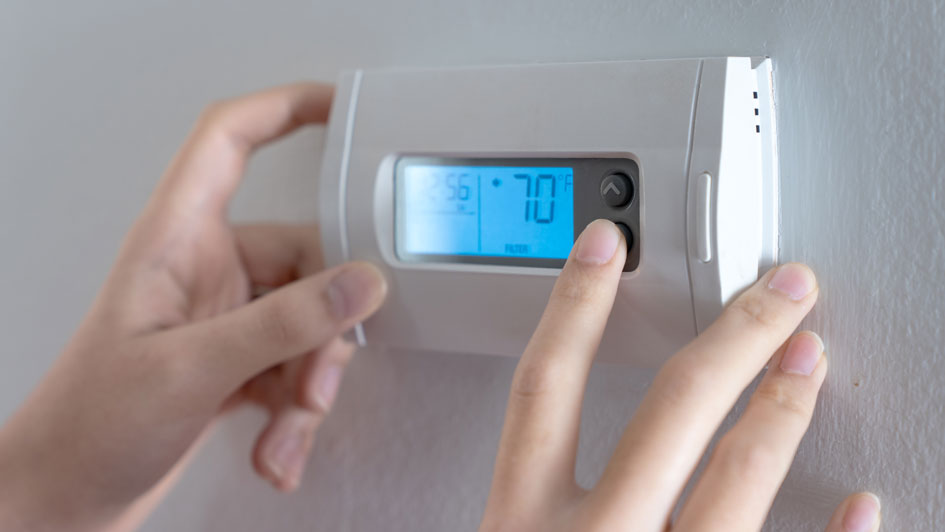
Everyone’s always looking to save money on their utility bills, but you should know there’s a way to keep costs down, even when you're out of the house.
The key is your thermostat. By making the most out of your thermostat, you can structure its daily schedule around your personal preferences. You can create a number of automated temperature settings for when you’re home, away or even when you’re sleeping.
By trying a few of these schedules, you have more time to enjoy pleasant temperatures while also keeping more of your money. Here are some ways your thermostat can be a source of energy savings:
While at Home
Pretty much whenever you're home, you want comfortable temperatures. For the most part, you probably have your thermostat lower in the summer while inside to make the most of the cool air.
But the most energy-efficient temperatures for when you're in your home during the summer is in fact anywhere between 78 and 80 degrees Fahrenheit. This way, you can stay cool while still lowering your monthly energy bill.
While Away
When setting the temperature for whenever you're gone, it's extremely common to move the thermostat higher for while they're gone.
If your home is in a shady spot in a cooler climate, you can set the thermostat to higher temperatures like 88 degrees while no one is home before you adjust it back to the sweet spot of 78-80 degrees when you or a family member return. This way, your air conditioning unit won’t be working overtime to keep an empty house cool.
While Sleeping
When it comes to sleeping in the summer, you want a nice cool temperature. A good rule of thumb is between 68-72 degrees Fahrenheit. You won't have to worry about getting too hot or too cold when you are trying to get some rest.
Additional Ways to Reduce Energy Use:
- Install a smart thermostat: Using a smart thermostat in the summer is an excellent way to reduce energy costs as it forms temperature schedules according to your lifestyle and home environment. A smart thermostat manages the temperature if you are home or sleeping, before allowing it to get warmer when no one is around. Using reputed brands and models such as the Lennox iComfort, you are able to adjust settings and schedules through your smartphone, tablet or laptop. Requesting smart thermostat installation in your Macon home can be the simplest strategy for maintaining comfortable, yet energy-efficient temperatures whether you're at home or across the country.
- Update your existing HVAC system: A high-efficiency HVAC system can save money in the long run. If a system boasts high energy efficiency, lower utility bills won't be far behind since it requires less energy to heat and cool your home. Air conditioning installation in Macon is a great way to beat the heat in the summer.
- Stay on top of routine AC maintenance: Hiring a skilled professional to perform regular air conditioning maintenance in Macon can have a serious effect on your total monthly energy use. With regular cleaning of the coils, checking for damage and keeping vents clear of dust and debris, you may notice your HVAC system perform better during day-to-day use.. Higher energy efficiency will also reduce strain on important or delicate components and lowers operational costs, leading to lower energy usage, which translates into lower energy bills.
- Replace your air filter regularly: Cleaning or replacing the air filter regularly saves money by helping air flow efficiently through your air conditioner. When filters become clogged, your air conditioner will have to work harder, and this greater strain could shorten the system’s life span and result in breakdowns.
- Confirm your attic is sufficiently insulated: Insulation is a crucial component for any energy-efficient home, securing the hot air outside and the cool air inside over the summer. The North American Insulation Manufacturers Association (NAIMA) suggests that homeowners living in southern climates should install at least 13-14 inches of insulation, while colder climates do better with 16-18 inches.
- Inspect your ventilation: Damage to the ventilation is capable of increasing your energy bills much more than 20 percent, plus it can also lead to problems with your water heater, clothes dryer and other appliances to get into the atmosphere of your home. Watching for signs of leaks and sealing them can fix both of those problems.
- Seal all other leaky spots in your home: Finding and sealing any remaining leaks in your home with caulk, foam sealant or weather-stripping can help keep it cooler on hot summer days. It’s also important to check for any gaps around windows, doors and even outdoor fixtures. Devoting time and effort to sealing leaks now can help you save a lot in the long term.
